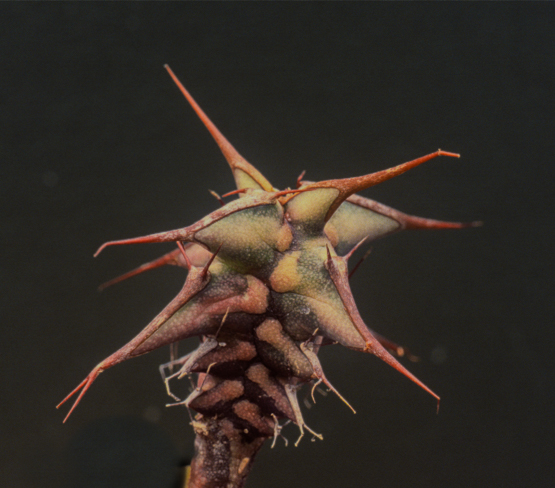This species was described in 1994 from Hurran Hurra in Kenya (west of North Horr, at the north end of the Chalbi Desert). A year later a second locality was found, but no other ones have been recorded.
Northern Kenya is rather under-collected, so the species may well occur in other places too, but for the moment it should be considered to be rare and endangered.
I was therefore quite chuffed to be able to see the species in the wild. The population looked quite healthy and several plants were in flower. The altitude of the locality is about 580 m.
Aloe ketabrowniorum forms low clumps to ca. 1 m in diameter, branching from the base. The stem creep on the ground with their tips raised and are to 30 cm long.
The leaves are to 38 cm long and 4.5 cm wide at the base, with small but firm marginal teeth. The inflorescences are to 70 cm tall.






































